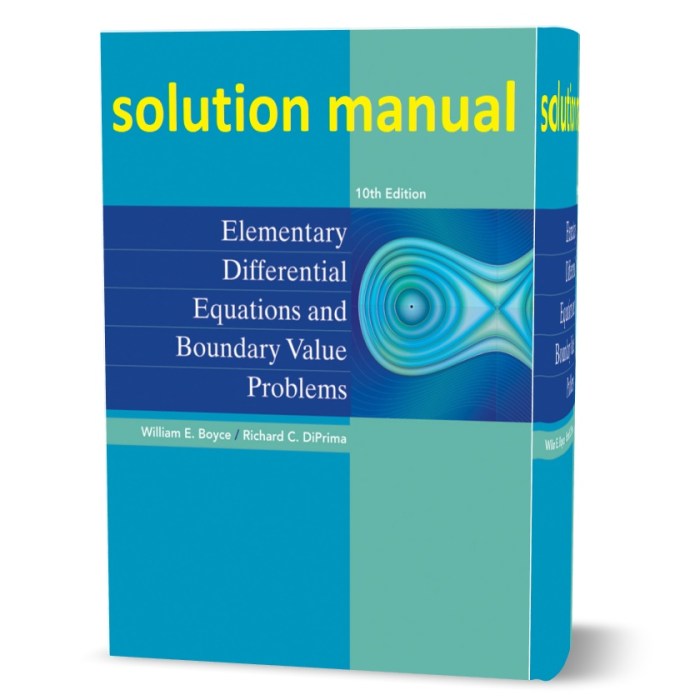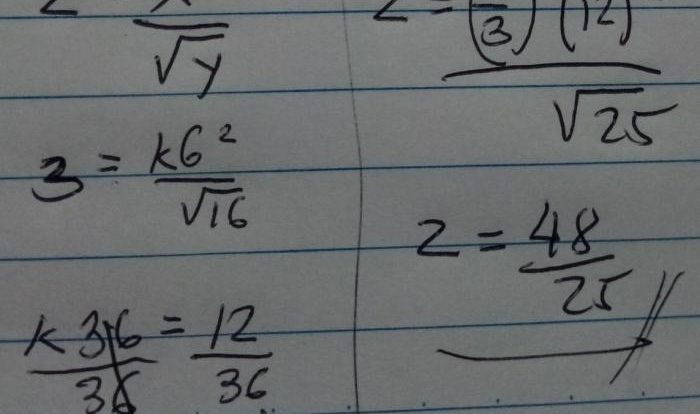Elementary differential equations and boundary value problems 12th edition – Prepare to delve into the captivating world of differential equations and boundary value problems with the highly acclaimed Elementary Differential Equations and Boundary Value Problems, 12th Edition. This comprehensive text, meticulously crafted by William E. Boyce, Richard C. DiPrima, and Douglas B.
Meade, serves as an indispensable guide for students and practitioners alike, providing a profound understanding of the subject matter through its rigorous yet accessible approach.
Within the pages of this esteemed edition, readers will embark on an intellectual journey, exploring the fundamental concepts, solution methods, and applications of differential equations and boundary value problems. From the intricacies of ordinary and partial differential equations to the significance of boundary conditions, this text delves into the heart of mathematical modeling, equipping readers with the tools to tackle real-world challenges.
Differential Equations Overview
Differential equations are mathematical equations that describe the relationship between a function and its derivatives. They play a crucial role in various fields, including physics, engineering, economics, and biology.
Differential equations can be classified into different types:
- Ordinary differential equations (ODEs) involve functions of a single independent variable.
- Partial differential equations (PDEs) involve functions of multiple independent variables.
- Linear differential equations have coefficients that are constant or functions of the independent variable only.
- Nonlinear differential equations have coefficients that depend on the function or its derivatives.
Differential equations have wide-ranging applications in real-world phenomena, such as:
- Modeling population growth and decay
- Describing the motion of objects under the influence of forces
- Analyzing the flow of fluids
- Predicting the behavior of electrical circuits
Solution Methods for Differential Equations: Elementary Differential Equations And Boundary Value Problems 12th Edition
Analytical methods for solving differential equations include:
- Separation of variables
- Integrating factors
- Exact equations
- Homogeneous equations
Numerical methods for solving differential equations include:
- Euler’s method
- Runge-Kutta methods
- Finite difference methods
- Finite element methods
| Method | Accuracy | Efficiency | Applicability |
|---|---|---|---|
| Separation of variables | High | Low | Limited to certain types of equations |
| Integrating factors | High | Moderate | Applicable to first-order linear equations |
| Euler’s method | Low | High | Simple to implement, but not very accurate |
| Runge-Kutta methods | High | Moderate | More accurate than Euler’s method, but more computationally expensive |
Boundary Value Problems
Boundary value problems (BVPs) are differential equations with specified conditions at the boundaries of the domain.
Different types of boundary conditions include:
- Dirichlet boundary conditions: The function is specified at the boundary.
- Neumann boundary conditions: The derivative of the function is specified at the boundary.
- Mixed boundary conditions: A combination of Dirichlet and Neumann boundary conditions.
BVPs arise in various fields, including:
- Heat transfer
- Fluid dynamics
- Structural mechanics
Applications of Differential Equations and Boundary Value Problems

Differential equations and BVPs have numerous applications in modeling physical phenomena:
- Population growth and decay: Modeling the growth or decline of populations based on birth and death rates.
- Radioactive decay: Describing the decay of radioactive substances over time.
- Heat conduction: Analyzing the flow of heat through materials.
- Fluid dynamics: Modeling the behavior of fluids in motion.
- Structural mechanics: Predicting the behavior of structures under various loads.
Industries where differential equations and BVPs are extensively used include:
- Engineering
- Physics
- Chemistry
- Biology
- Economics
Advanced Topics
Advanced concepts in differential equations include:
- Systems of differential equations
- Partial differential equations
- Numerical methods for solving advanced differential equations
Real-world examples showcasing the applications of advanced differential equations include:
- Modeling the spread of diseases
- Analyzing the behavior of complex fluids
- Predicting the weather
Commonly Asked Questions
What is the significance of boundary conditions in differential equations?
Boundary conditions play a crucial role in differential equations by specifying the values or derivatives of the unknown function at specific points or boundaries of the domain. They provide essential information for determining the unique solution to the differential equation.
How are differential equations used in real-world applications?
Differential equations are extensively used in various fields, including engineering, physics, biology, and economics. They provide mathematical models for describing and analyzing dynamic systems, such as population growth, radioactive decay, heat transfer, and fluid flow.
What are the key solution methods for differential equations?
Analytical methods, such as separation of variables and integrating factors, are commonly used to solve differential equations. Numerical methods, such as Euler’s method and Runge-Kutta methods, provide approximate solutions when analytical methods are not applicable.
